Military Ground Vehicles Put Connectors to the Test
The connectors specified for military ground vehicles must optimize size, weight, and power and endure the rugged conditions typical in modern ground operations.
Military vehicles for use on Earth’s surface range from small unmanned ground vehicles (UGVs) that detect and remove bombs to the enormous 50-ton Medium-Heavy Equipment Transporter (MHET) that carries trams and amphibious assault vehicles. They can be manned or unmanned, like the Optionally Manned Fighting Vehicle (OMFV) slated to replace the Bradley tank, and with or without armor, like the Armored Multi-Purpose Vehicle (AMPV), the Mobile-Protected Firepower (MPF) small tank, and the Joint Light Tactical Vehicle (JLTV).
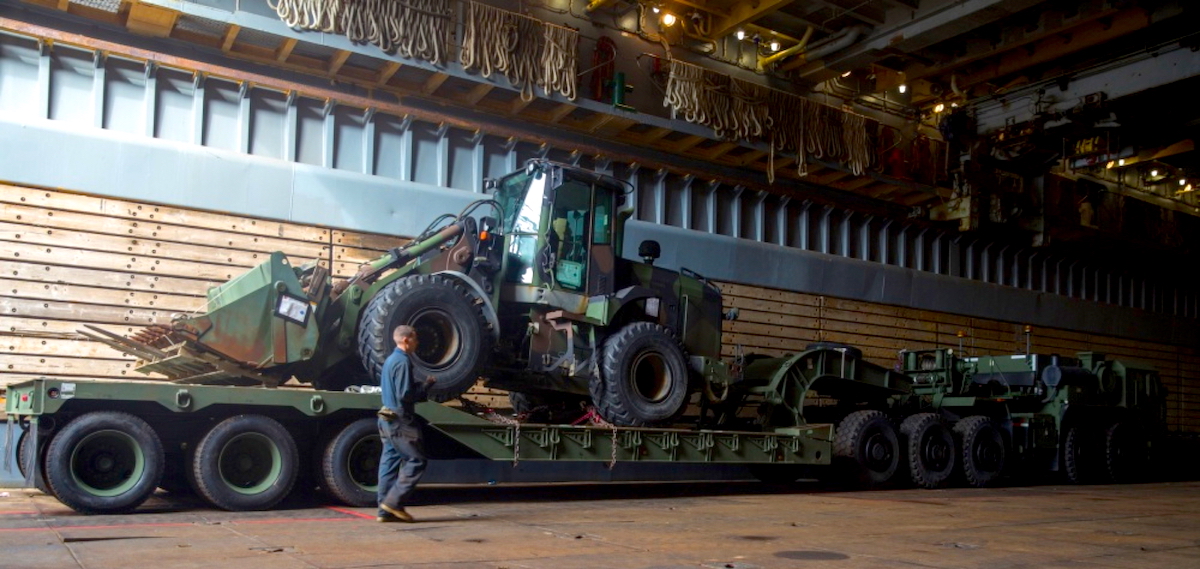
The 50-ton Medium-Heavy Equipment Transporter trailer (MHET), one of the military’s largest ground vehicles, provides long-distance transportation for heavy equipment. (Source: US Marine Corps)
Overall connector needs for all military ground vehicles include resistance to shock, vibration, and the elements, as well as quick disconnects and more and denser shielding for higher signal speeds, said Bob Stanton, Omnetics’ director of technology. Specific connector and cabling needs differ, depending on type of military vehicle and its electronics systems.
“UGVs have different uses and requirements from manned ground vehicles,” said Matt McAlonis, engineering fellow, and Certified Lean Design for Six Sigma Black Belt for TE Connectivity’s aerospace, defense, and marine business unit. “For example, they don’t need human-machine interfaces inside the vehicle, and they may get exposed to environments that aren’t safe for humans, like temperature, chemical, shock, and vibration.” Unmanned military ground vehicles also have varying levels of autonomy, ranging from those that must be manually operated to “set it and forget it” vehicles programmed for a pre-defined mission. “We also have military vehicles with some degree of cognitive ability to make simple decisions about actions that weren’t in its pre-determined mission programming, like navigating around an unexpected obstacle.”
The connectors employed in military ground vehicles must optimize all aspects of size, weight, and power (SWaP), said McAlonis, as these characteristics are critical to maintaining a military vehicle’s usable service most efficiently, said McAlonis. OEMs should prioritize small, miniature, thin, and lightweight connectors, sometimes made of non-traditional materials like composites, and ask their connector supplier questions like, “How do I leverage the longest battery life, since these electronics are running are hotter, which makes them less efficient?” to identify the interconnect solution that will best maximize operational efficiency.
Cramped Spaces Make Accessibility Critical
Accessibility becomes a major issue in the cramped spaces found in today’s military vehicles, which — like the new Electronic Warfare Tactical Vehicle (EWTV) — are often packed with electronics. Connectors in these vehicles must support fast changeout and meet restrictive size and shape requirements.
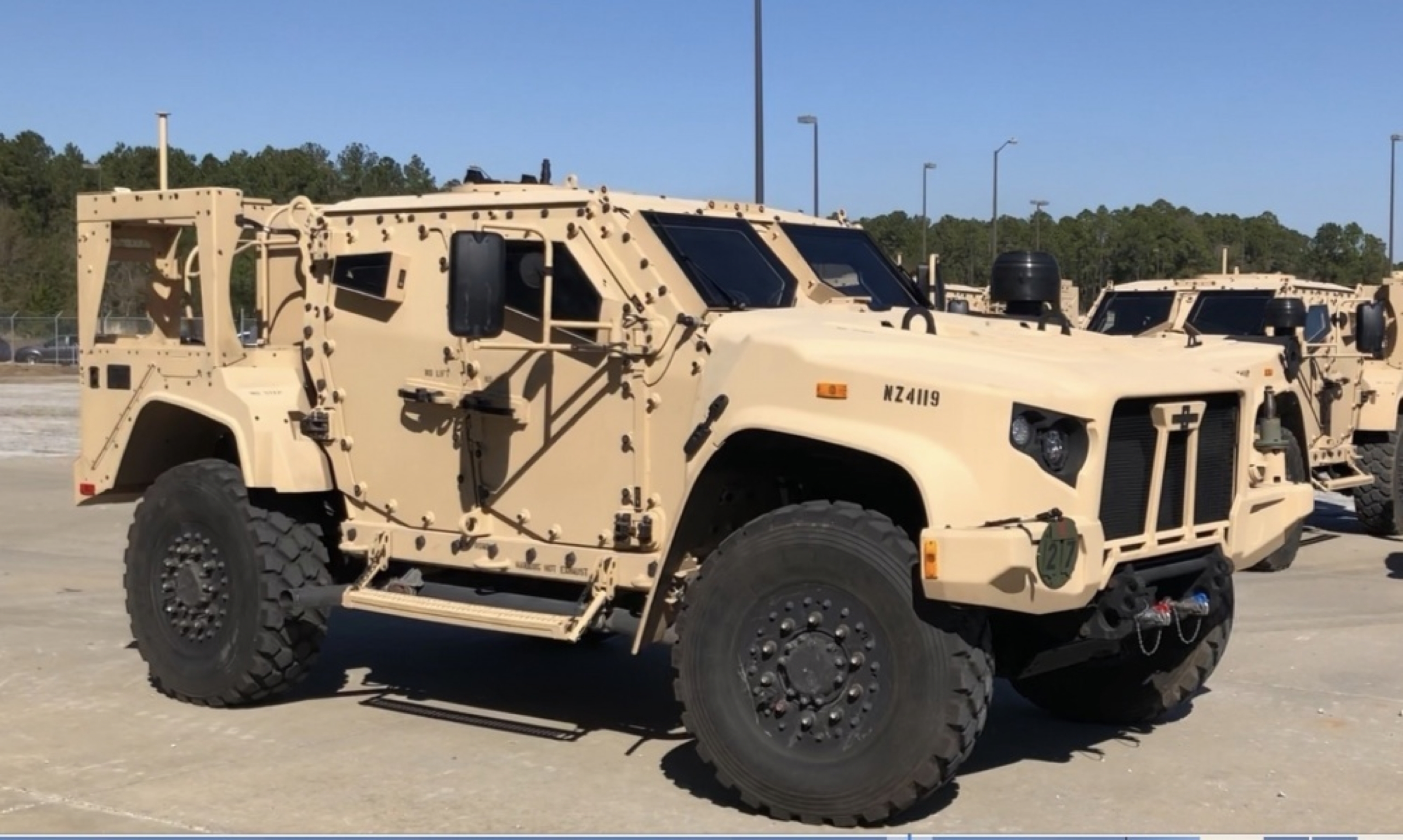
One of the newest military ground vehicles is the Joint Light Tactical Vehicle (JLTV), an Army-led, joint modernization program to replace many existing HMMWVs and improve desert operations. (Source: US Army)
Fast changeout is especially important for modules plugging into military ground vehicles’ main instrument package, said Stanton. “Connectors and cables for power and current that run from the main instrument power source to smaller equipment on the vehicle must accommodate high power and current for the main unit in back of the truck,” he said. “Basic connector needs also include signal speed from surveillance devices mounted on the vehicle, shielding and cyber-attack resistance to EMI and other radiation and signal noise, which can be addressed by using high-quality braiding of cable-to-connector backshells, and cables that are flexible and bend without breaking as they come out of the connector.”
A major consideration when determining connector type and shape is whether the vehicle’s electronic system must be disconnected and maintained in the field. Although smaller is usually better, connectors can be too small for their own good. “Generally, when dealing with data, the smallest, lightest connector possible is chosen: if a technician is wearing gloves, there needs to be enough physical space to get in there to connect or disconnect the connector,” said McAlonis. “But if it’s too small or delicate, it might break.” Also, packaging rectangular connectors like blocks is convenient, but circular connectors may give more space for technicians to uncouple the unit by hand.
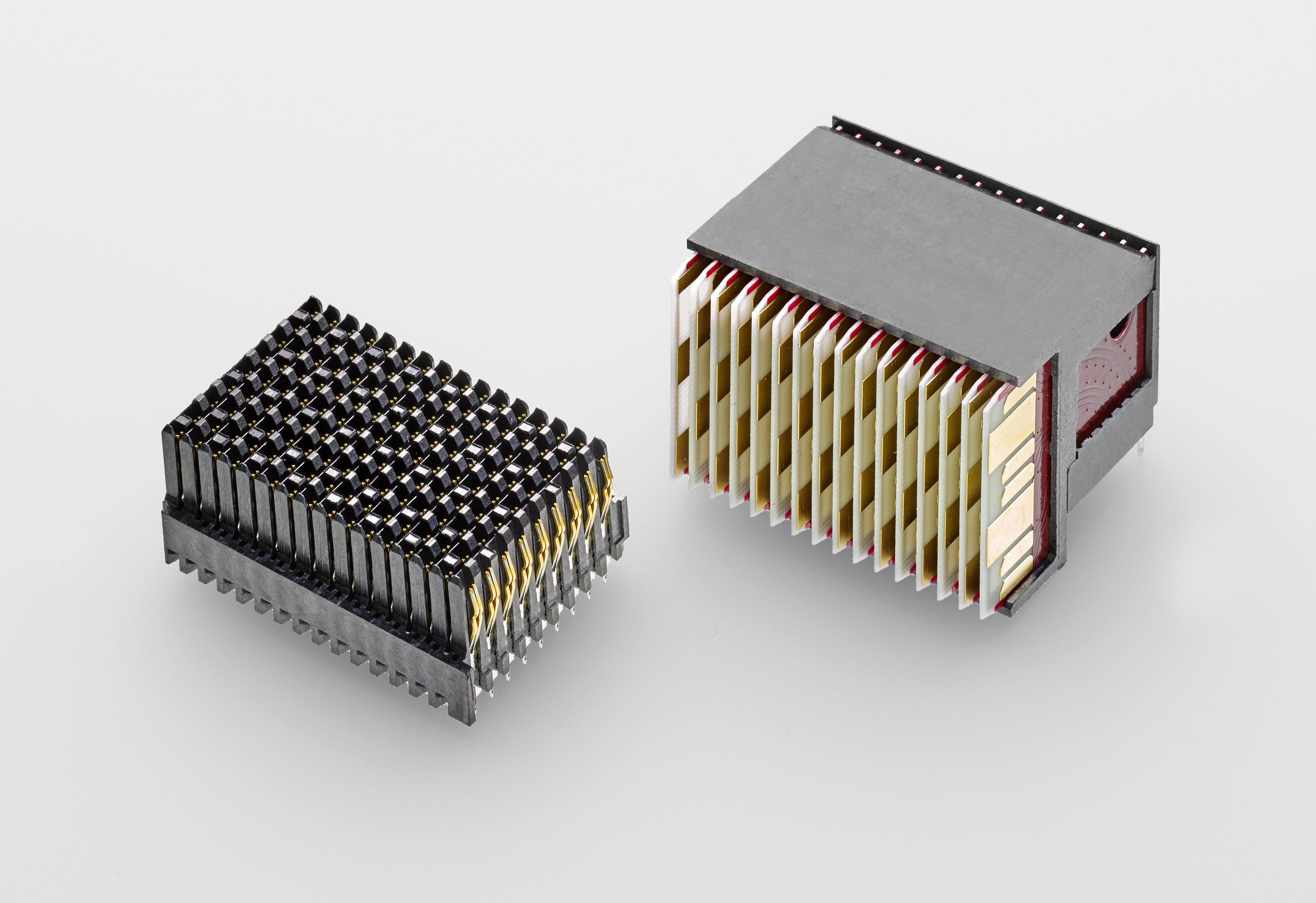
The next-generation MULTIGIG RT 3 connectors are lightweight, rugged backplane connectors that support speeds of 25Gb/s and above and meet interface dimensions for VITA 46 VPX connectors.
TE Connectivity’s board-to-board MULTIGIG RT and VPX connector products are highly adaptable: They can run power, differential, and single-ended signals, provide ESD protection for Level 2 maintenance, and are the lightest-weight connectors of their type, said McAlonis. The company’s portfolio of different RF products either mount on the card or route inside the box, and it also provides fiber optics products for inside the box. For the I/O panel typically found on the outside of the box, military-grade circular connector products are generally used, like TE Connectivity’s DEUTSCH MIL-DTL-38999 or Wildcat connectors. Most of these have insert arrangements for accommodating different technologies, such as power, signal, RF, or fiber.
Sometimes what’s needed to fit well within the application or to offer special mounting is a unique shape, best designed as variations from existing military specification standards to assure “reliability by similarity,” said Stanton. In robotic machines like UGVs, for example, connectors and cables with customized shapes are often needed to fit into unique spaces in the robot arms or release devices. But the materials used and metals specified can be critical. For example, aluminum offers strength and ruggedness advantages over brass. “Cable jackets must also bond well with the connector backshell and withstand higher temperatures in the engine compartments of military ground vehicles and other mil/aero equipment,” he said. “Strain relief and chemical resistance are also key criteria.”
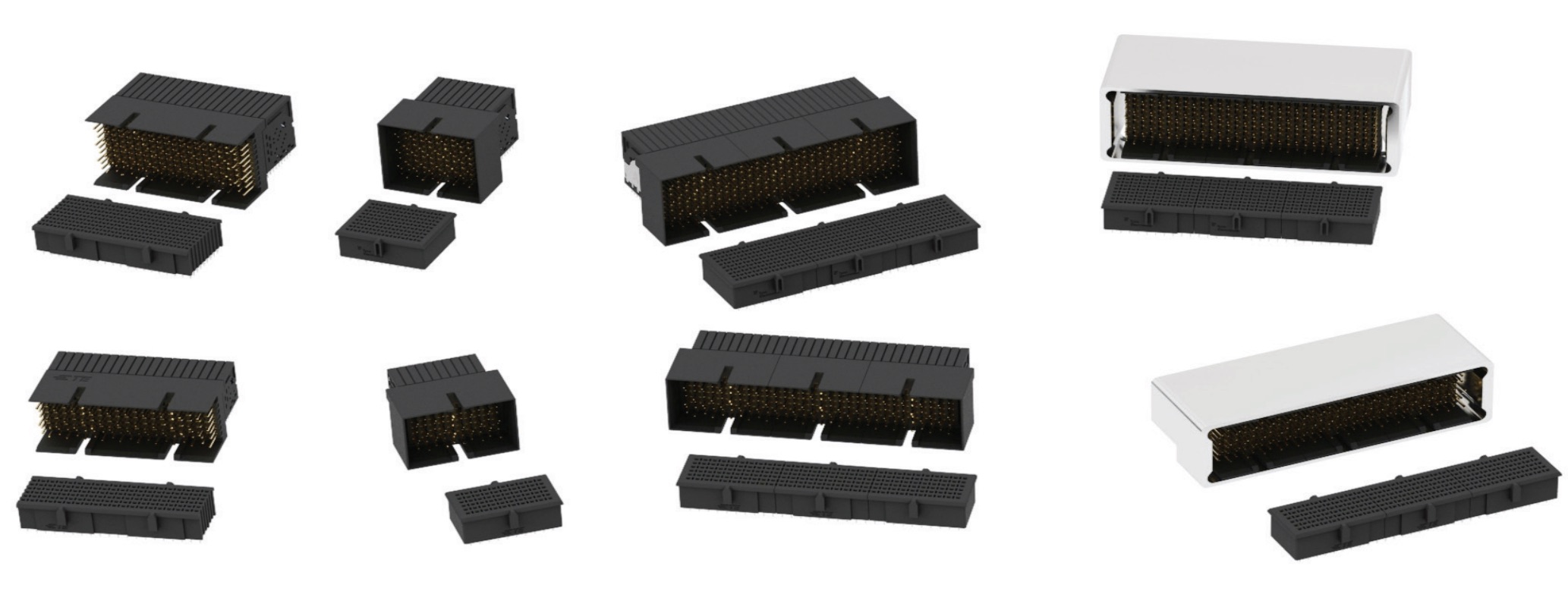
TE Connectivity’s Fortis Zd ruggedized board-mounted connectors are designed for data rates of 12Gb/s or more and are ideal for applications that require high-density signals in card-to-card communication, as well as extreme mechanical and electrical performance.
To help with space constraints, BNC coax connectors are getting smaller, as SMA and even nano-coax are being used in military applications, said Stanton. Also, two or more electronic technologies are being combined into hybrid connectors, which help fit a combination of coax and digital signals or power-plus-signal designs into the instrument deck. “Although standard military specification Micro-D shells are being used, the inside of the connectors now offers a mix of coax and signal within one shielded cable and backshell-shielded connector. This enhances safety from cyber-attack.”
Omnetics focuses on higher-performance in-vehicle electronics, like those used in military ground vehicles and other specialized manned and unmanned vehicles, said Stanton. Connectors are designed to fit well inside the instrument system for routing signals from module to module and from instruments to transceivers. Many offer rugged latching shells or quick disconnects. “Omnetics’ are particularly useful with instruments and electronics that travel to battle stations and are then dismounted, such as robotic surveillance and/or robotic weapons,” he said.
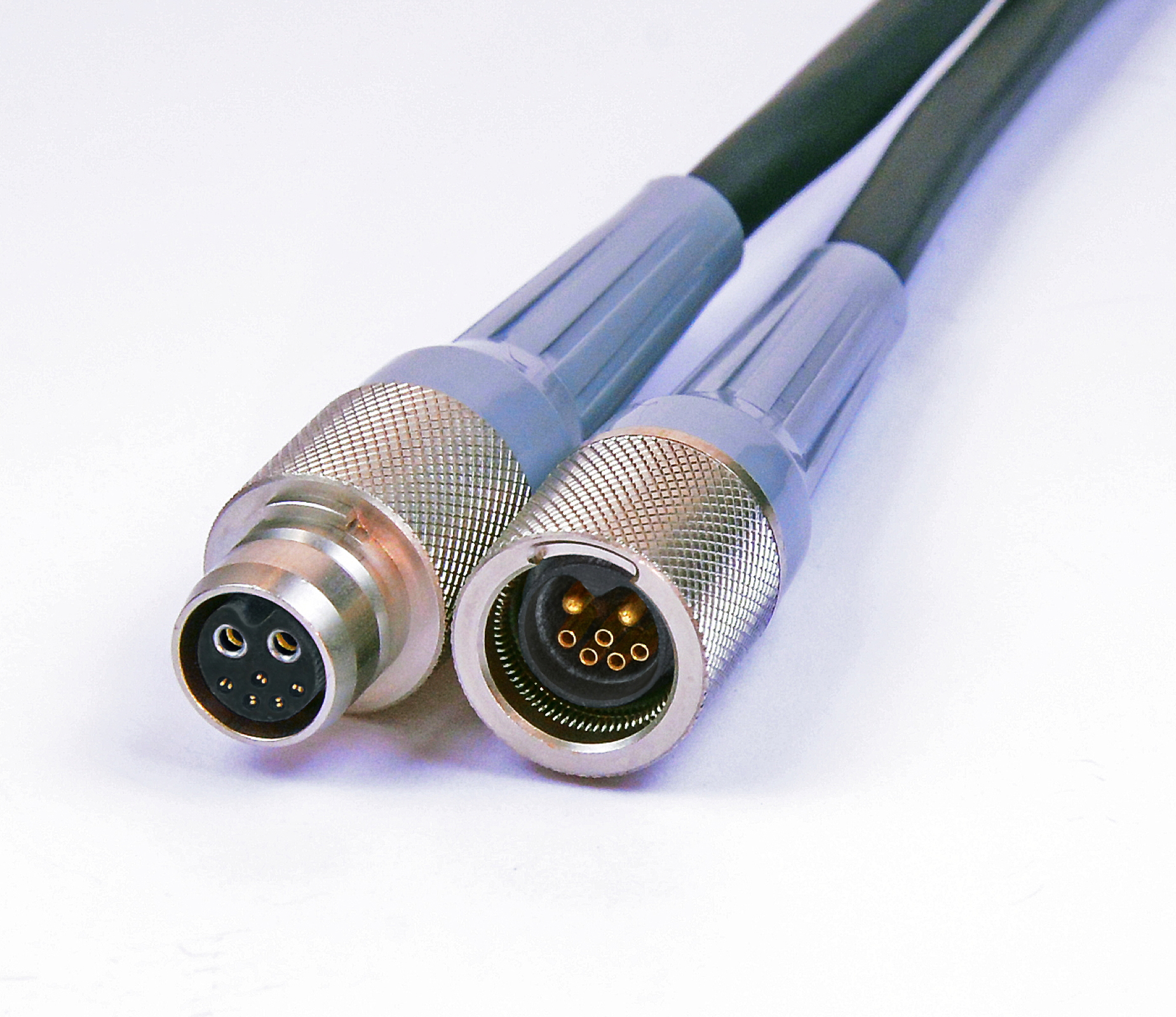
Mixed-signal, hybrid connectors, such as this Micro Circular Breakaway Hybrid, are becoming increasingly popular in military applications to reduce both size and weight.
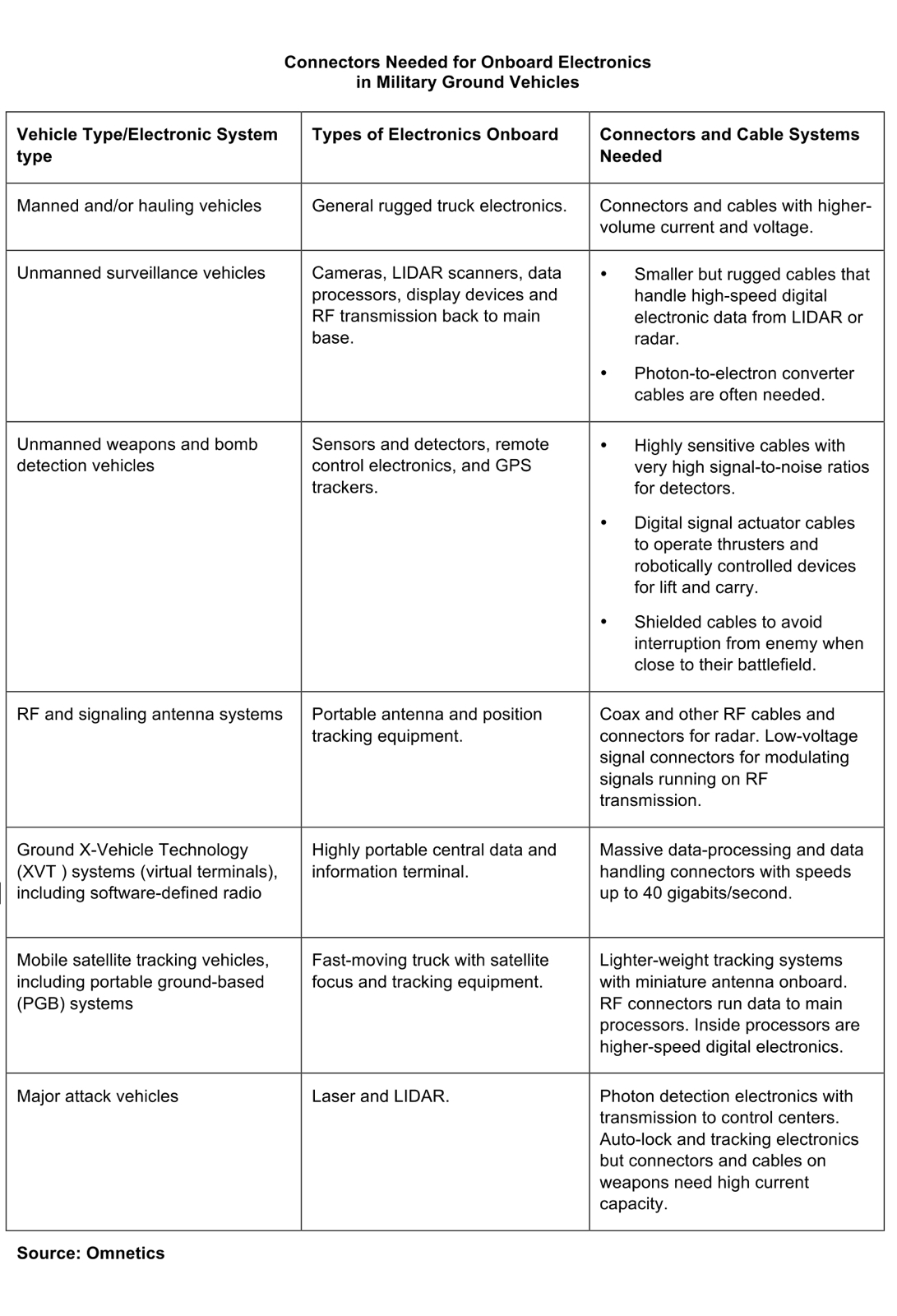
Cabling Counts
In today’s electronics, cables and connectors are interwoven more and more, especially as climbing signal speeds reach 5Gb/s, said Stanton. A second reason is skew between right and left wires in high-speed differential signals using twisted-pair technologies like USB 3.0. If skew exceeds 15ps per meter, displays become pixilated. “This is so precise that we can’t just depend on the connector alone anymore,” he said. A third cause is the increased importance of shielding. Increased speed in cable or connector increases noise sensitivity, and signal sine wave quarter wavelengths are getting shorter, making them more susceptible to any kind of interference. Connectors must thus match the cable both physically and electrically.
Other cable issues include how to fit large and bulky cables, like Ethernet Cat 6A bundles, into tight spaces, said McAlonis. In some military vehicles, they may not fit at all, so switching to fiber optics can eliminate weight and mass. But that may create other challenges. “Will the temperature of the application environment affect the longevity or reliability of the fiber optic transceivers?” he said. “Or if the electronics need to be unplugged and serviced in a desert sandstorm, am I prepared for that with the proper cleaning and maintenance techniques?” The bend radius of RF antenna, cabling, and fiber optics products must also be carefully maintained to prevent breakage. “So, you must have very strategic cable management and consider accessibility very strategically.”
Ann R. Thryft has been writing about manufacturing- and electronics-related technologies for 30 years, covering interconnect, single-board computers, robotics, machine vision, embedded devices, manufacturing materials and processes, and all kinds of datacom and telecom. She’s written for EE Times, Design News, COTS Journal, RTC Magazine, EDN, Test & Measurement World, and Nikkei Electronics Asia.
Like this article? Check out our other Harsh Environment, Connector Basics, and 2019 articles, and our Military/Aerospace market page.
- Underwater Connectors Get Smaller and Tougher for Submarines and UUVs - November 10, 2020
- Small Military UAVs Demand Smaller, Lighter Connectors - August 4, 2020
- Commercial Connectors Toughen Up for the Harshest Environments in the Universe - June 2, 2020





